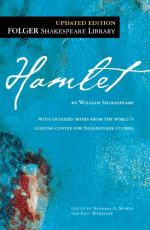|
This section contains 12,713 words (approx. 43 pages at 300 words per page) |

|
SOURCE: Stone, James W. “Androgynous ‘Union’ and the Women in Hamlet.” Shakespeare Studies 23 (1995): 71-99.
In the following essay, Stone studies Shakespeare's representation of androgyny in Hamlet, and finds that the collapse of sexual difference in the play leads to a parallel disintegration of moral boundaries.
Some wish to see in Hamlet a womanish, hesitating, flighty mind. To me he seems a manly, resolute, but thoughtful being.
I cannot see Hamlet as a man. The things he says, his impulses, his actions entirely indicate to me that he was a woman.
—Sarah Bernhardt
Hamlet has proven to be an interpretive mystery for critics interested in gender, a play whose proverbial excess of meaning has led some critics to gender the excess and the mystery of the text itself as feminine. Since the problem of this problem play is femininity as such, Ernest Jones was prompted to call Hamlet the...
|
This section contains 12,713 words (approx. 43 pages at 300 words per page) |

|


